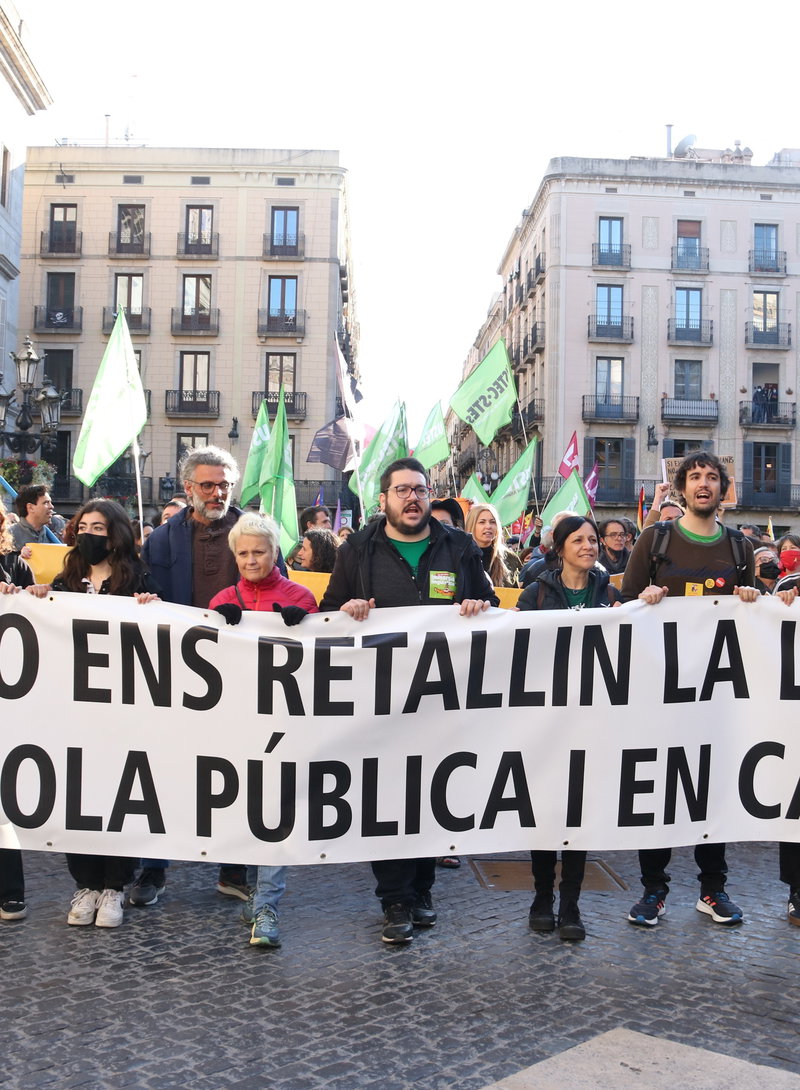Long-term resident
GROUNDHOG
any teacher caught imparting knowledge in Catalan was sacked on the spot
Not long after the Catalans lost the War of Spanish Succession in 1714, a Castilian functionary called José Patiño reported that the losers ’spoke and wrote only in Catalan, without making much use of Spanish’. Castile then made Spanish obligatory in Catalan schools. In the 19th century, 150 laws were enacted with a view to enforcing the use of Spanish in Catalonia, notably in schools. In 1927, during the dictatorship of the Catalan-unfriendly Miguel Primo de Rivera, inspectors were sent without warning to schools in Catalonia and any teacher caught imparting knowledge in Catalan was sacked on the spot. Despite all this, at the beginning of the 1920s only 5% of the Catalan population (the wealthiest segment) could speak fluent Spanish. It was only under Franco (1939-75) that Spanish became widely spoken in Catalonia, for the simple reason that it was the only tongue that was allowed to be used just about anywhere, including, it goes without saying, schools.
Linguistic immersion means that in an area where two languages are spoken, the weaker one – which, in Catalonia, is now Catalan - becomes the main teaching language, while full knowledge of the stronger or more prevalent one is also guaranteed, thus ensuring the formation of genuinely bilingual students. It was introduced in the early 1980s with a pilot project in the mainly Spanish speaking town of Santa Coloma de Gramenet, with the approval of the parents involved. Since then, the system has been applied to all public (i.e. state) schools in Catalonia, thus giving equal opportunities to large numbers of students who will need Catalan or Spanish or both for future employment, not to mention leisure and entertainment. Those concerned about Spanish being ‘lost’ to Catalan, should look at a survey carried out by the main teachers’ union, USTEC, which showed that the level of Spanish of Catalan students is higher than those in over 50% of monolingual Spanish regions. My own children - who have been through the full Catalan public school system - speak, write and read perfect Spanish, although at home, for circumstantial reasons, hardly a word of Spanish has ever been spoken.
But in December of last year, the Supreme Court of Catalonia (TSJC), a Spanish, not a Catalan, institution, declared that 25% of all classes had to be taught in Spanish only. The Catalan government stalled, pointing out that the 2012 law was no longer on the statute books. In May of this year, the TSJC, kow-towing to a petition from a tiny right-wing association called the Asemblea por una Escuela Bilingüe insisted that the 25% law had to be applied in all schools within a fortnight. Since then, the teachers’ unions and hundreds of parent-teacher associations have protested against the measure, which would end four decades of successful linguistic immersion and open the legal door to greater imposed percentages of Spanish, which would prevent students from Spanish-speaking families from learning Catalan properly, thus leading to the kind of linguistic segregation which existed during and immediately after the Franco dictatorship.
What’s interesting about this rule is its similarity to the ones which have gone before it with such predictable monotony in the 18th, 19th and 20th centuries. Why is there this obsession with reducing the use of Catalan? And how is it that a handful of unelected toga-wearers have been able to override the policies of a democratically elected Catalan government and the wishes of a majority of Catalonia’s inhabitants? Are they not aware that one of the defining characteristics of the Spanish state is that it is both multilingual and multinational? Perhaps not.


